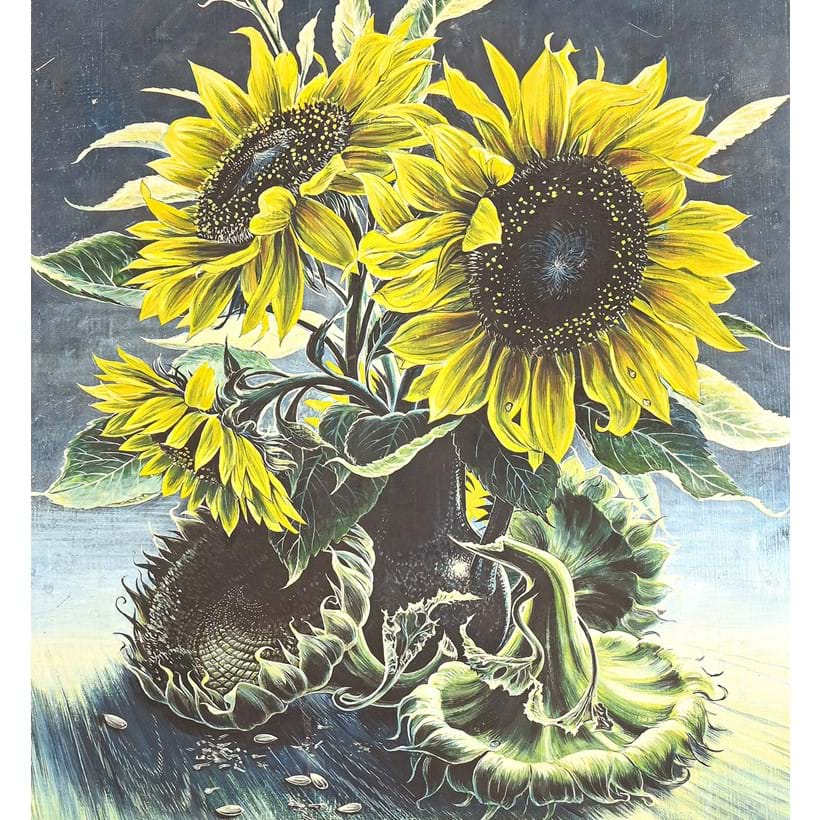Talking Techniques: Tempera Through Time
Many of us are familiar with the concept of tempering chocolate. Even if you aren’t, everyone has tasted the result of a well-tempered piece of chocolate: the sumptuous glossy finish, the smooth texture, and the satisfying snap of high-quality chocolate. But have you ever considered tempering egg? Here, Dreweatts Picture Specialist, Francesca Whitham tells us more about the history of the tempera painting technique.

Tempera painting is an ancient technique that was widely used throughout Ancient Egypt, Babylonia and the Byzantine Empire. The process involves mixing dry pigments with a binding agent, traditionally egg yolk. This method of painting was extremely popular and produced vibrant colours and the ability to depict precise details. The method produces artwork with a distinctive matte finish and rich texture which is the results of a perfectly formed mixture which is smooth and consistent. The word tempera derives from the verb "to temper," which is defined as "bringing to a desired consistency." Tempera was the primary medium for painting until it was overtaken by oil painting during the Renaissance. Despite this shift, tempera painting experienced a notable resurgence in 20th century British art, playing a significant role in the era’s artistic landscape.

Most famously William Blake experimented with tempera technique, binding pigment with glue. Unfortunately, the condition of many of these works from this period have deteriorated but important pieces still remain, such as The Ghost of a Flea held at the Tate Gallery and Virgin and Child at the Yale Center for British Art. Following this resurgence in 1820s, Joseph Southall, Christiana Herringham and Marianne Stokes set up the Society of Painters in Tempera in 1901 which included Maxwell Armfield.

This resurgence of tempera painting in 20th century British art underscores its importance as more than just a nostalgic nod to the past. It represents a bridge between historical techniques and contemporary artistic expression, allowing modern artists to explore new dimensions of creativity. The meticulous process of blending pigments and binders to achieve the desired consistency mirrors the dedication to craftsmanship that defined the work of tempera painters throughout history.

Included in Dreweatts' Art Live auction on 1 August is a beautiful work by Maxwell’s cousin Stuart Armfield. The work illustrates vibrant sunflowers which sit on a blue futuristic background, almost as if the flowers have been captured in a moment of time travel. The unusual composition is particularly striking and it is hard not to linger on the large heads of the sunflowers which have fallen and are stuck to the ground.
Auction Details
Thursday 1 August, 10.30am BST
Donnington Priory, Newbury, Berkshire RG14 2JE
Browse the auction
Sign up to email alerts
BIDDING:
Bidding is available in person at our salerooms, online, by telephone or you can leave commission (absentee) bids.
VIEWING:
- Viewing is available by appointment
- Dreweatts remote viewing service is available by appointment | Find out more
To book an appointment to view, please email: pictures@dreweatts.com or call +44 (0) 1635 553 553

















